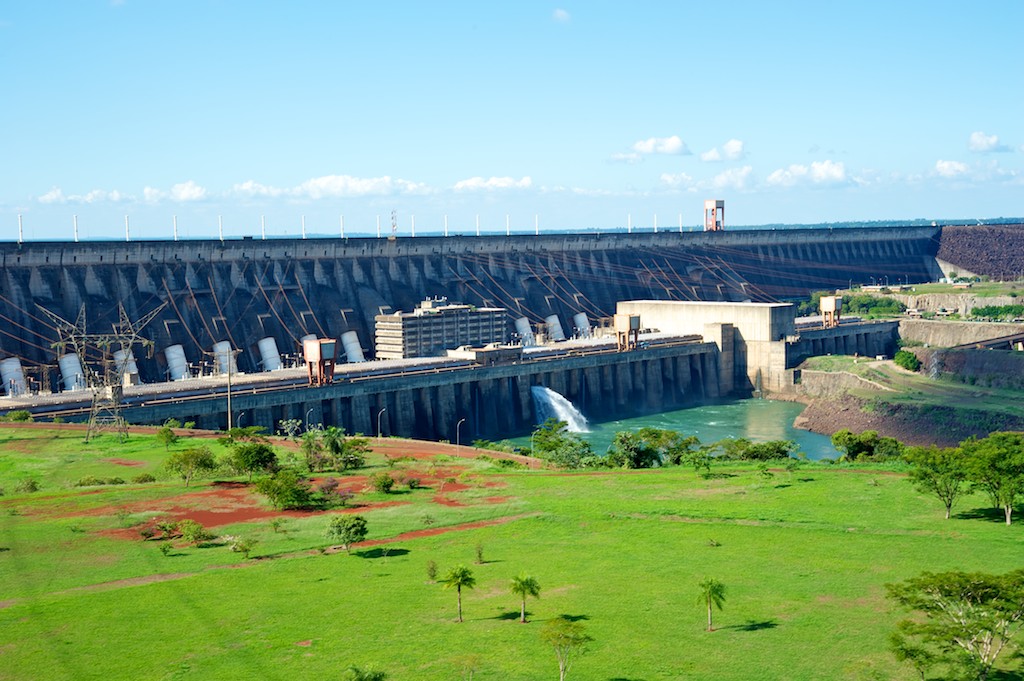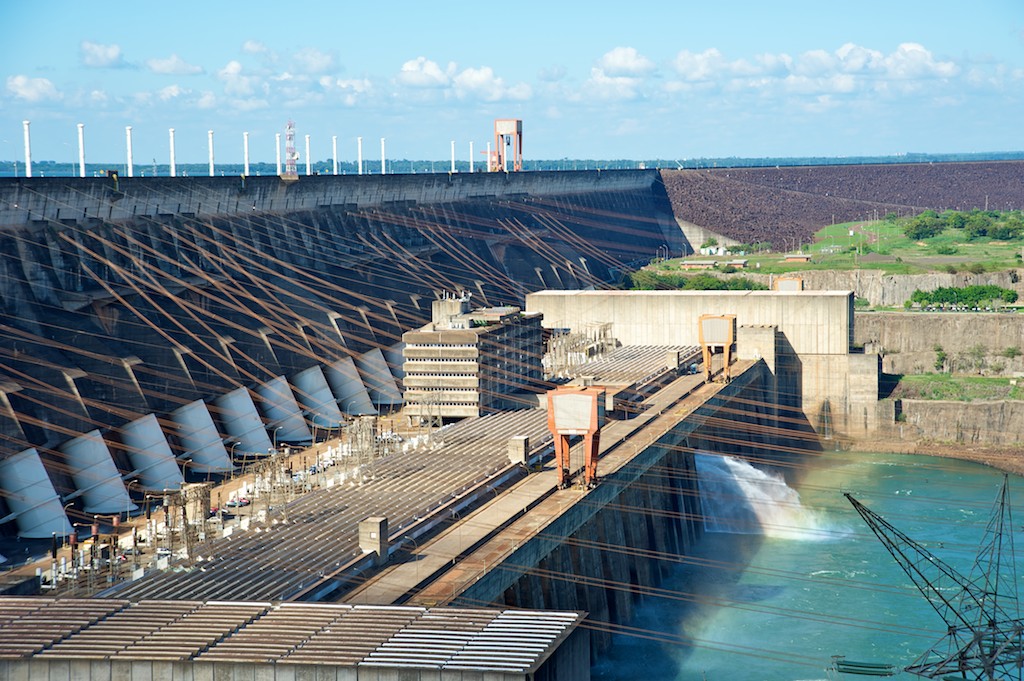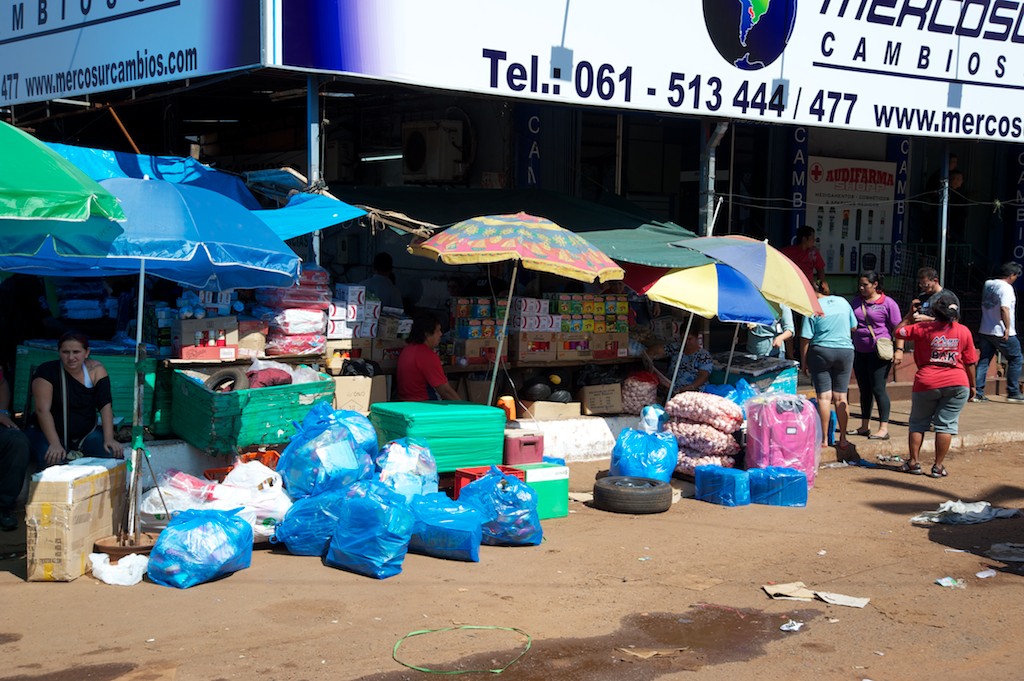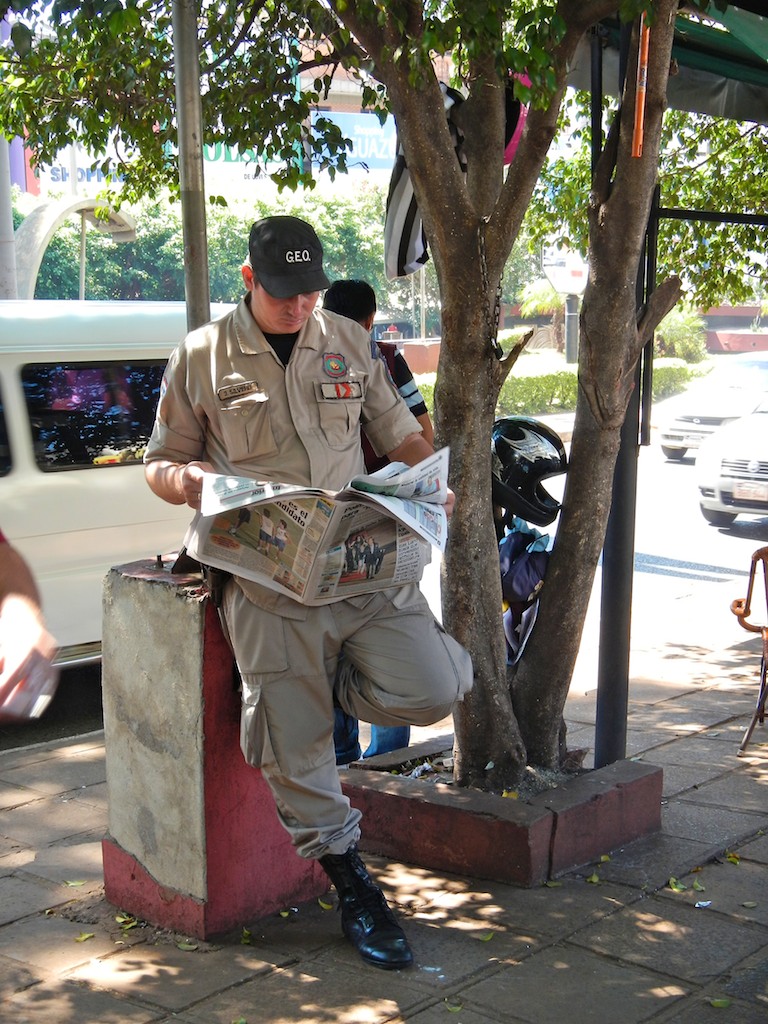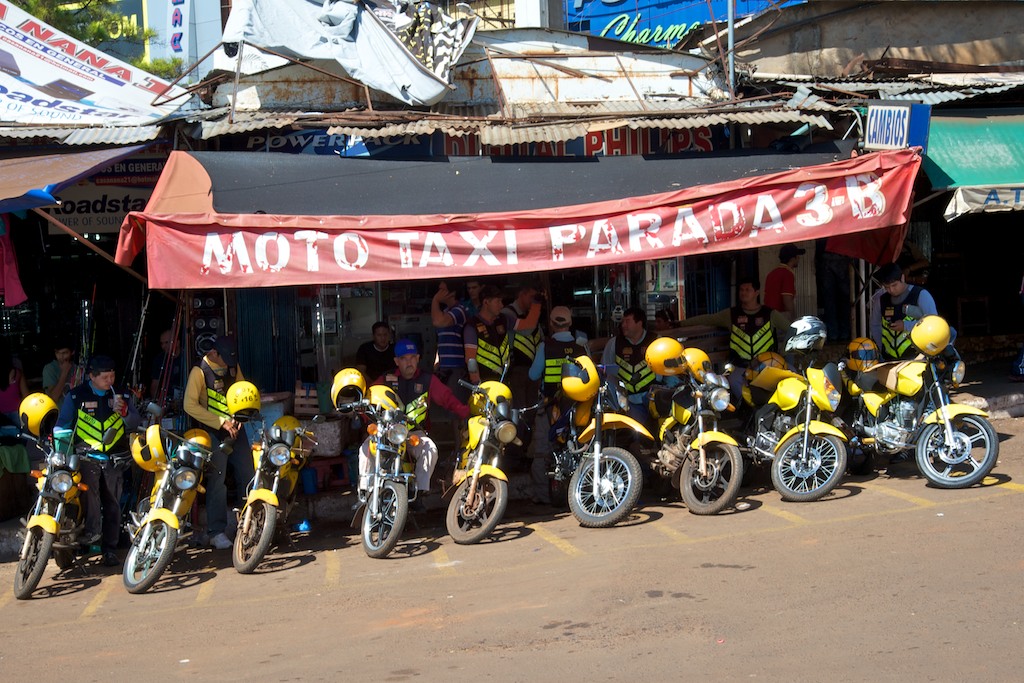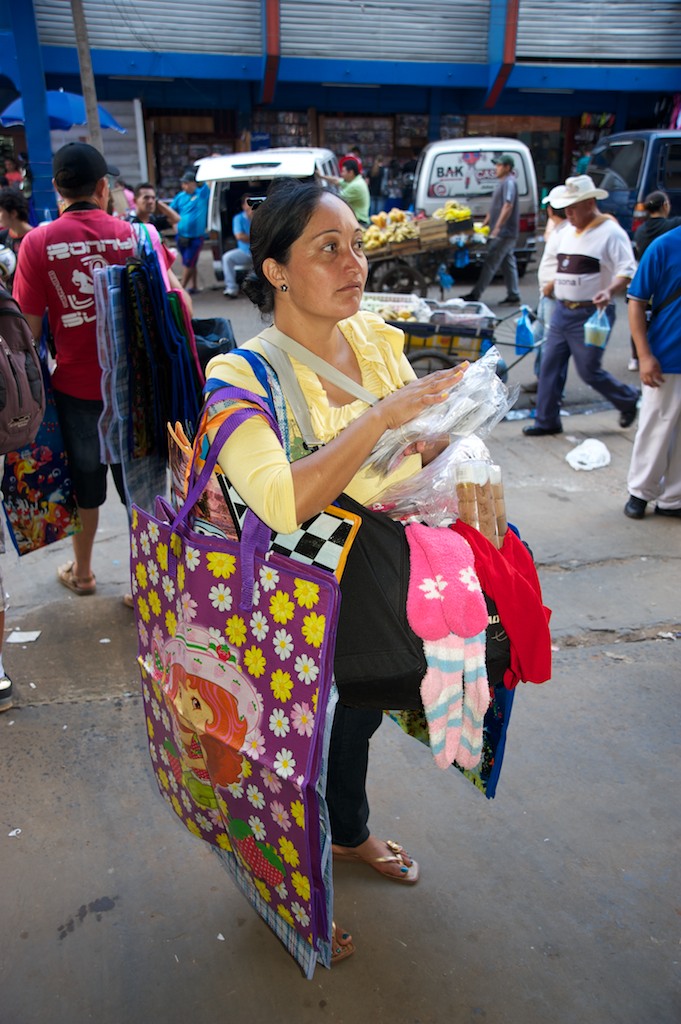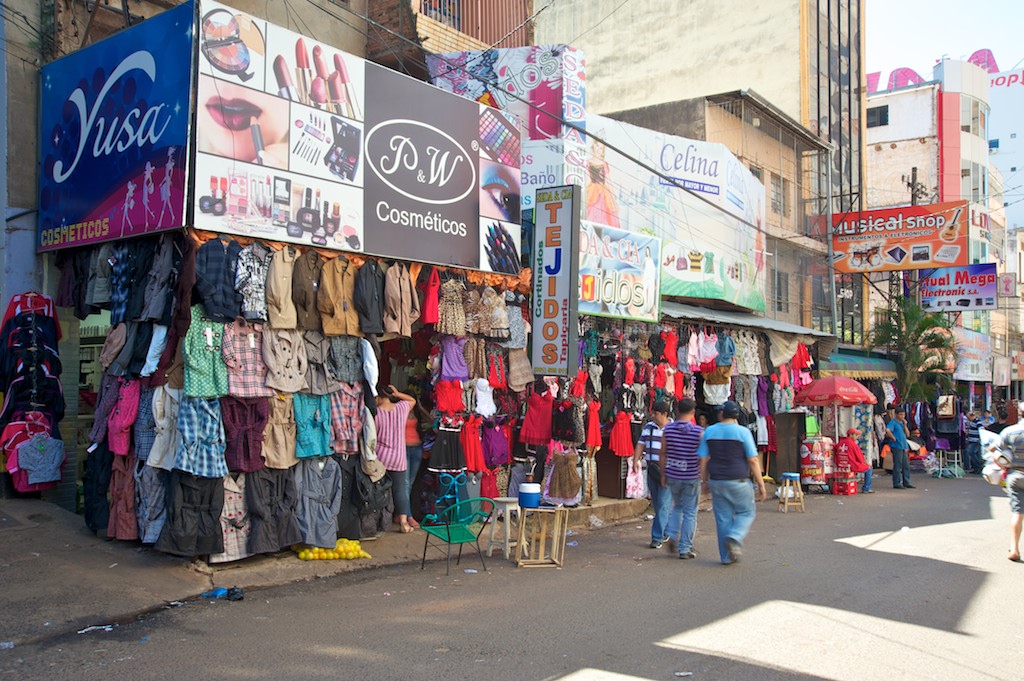We spent the morning in Paraguay at the border town called Quidad del Este. Although only a kilometre or so away from Foz Do Iguazu in Brazil, the border crossing requires traversing the Parana River via a single span 4 lane bridge which is about 500 m long. It was bumper to bumper in both directions and there were no checks for passports etc. Smuggling cheap goods across the border from Paraguay into Brazil is common practice and there seemed to be little effort to prevent it. Paraguay is much poorer than Brazil and the streets of Quidad del Este were overcrowded with cars and hawkers offering every imaginable item from imitation watches and perfume to musical condoms. Yellow taxi motorbikes duck and weave amongst the cars at break neck speeds. We spent most of our morning inside a huge air-conditioned mall doing duty free shopping and looking mainly for the reputedly cheap electronic goods on sale there. We bought a USB 32 Gb memory stick and an 8 Gb compact flash card for the Nikon D700 both at reasonable prices. One shop had a Nikon D3s camera body on sale for a mere US$3500.
On the way back to Brazil it was fascinating watching all the frenetic activity & utter chaos on the streets of Quidad del Este while we were sitting in the van in a traffic jam waiting to go through customs. When we eventually got to customs we went straight through without even showing our passports.
Our afternoon was spent visiting the Itaipu (“Singing Rock”) hydro power station which is on the border of Brazil & Paraguay. It is currently the largest hydro- power station in the world but quite different from our Tasmanian hydro stations. It has only 80 m of vertical fall to the turbines but relies on the huge volume & flow of water held in the Itaipu dam. The water flows through 17 penstocks (each 8 m diameter) and into the Parana River. They said the volume of water flowing was 200 times the flow over the Iguazo Falls (??). Needless to say the hydro power station provides almost 95% of Paraguay’s electricity and 40% of Brazil’s.
We spent a little time on our return visiting a gemstone outlet where rare and semi-precious gems were cut and presented. Brazil is famous for its emeralds, various colours of topaz and tourmaline plus many other interesting gem bearing minerals too. We bought two small gem stones, a pink tourmaline stone and a deep blue topaz stone.
We caught a night bus at 10.00 pm to Bonito which was 750 km to the north-west.

